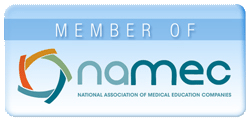Expert Interview: Strategies in Intrathecal Pain Management
SmartMobile(TM)
Premiere Date: Friday, November 21, 2014This activity offers CE credit for:
- Physicians (CME)
- Other
All other clinicians will receive a Certificate of Attendance stating this activity was certified for AMA PRA Category 1 Credit™
Credit Expiration Date:
Saturday, November 21, 2015
Note: Credit Is No Longer Available
 | David L. Caraway, MD, PhD Medical Director Center for Pain Relief Tri State, PLLC Huntington, WV |
Physicians who treat patients with chronic pain find themselves in a dilemma: offering adequate care for their patients that may include prescribing opioids that have the potential to be misused or diverted. Over 50% of individuals with chronic pain state that their pain is not well controlled or that they have frequent breakthrough pain. Treatment choices in chronic pain are complex—physical therapy, injections, oral medication, spinal surgery, spinal cord stimulation, and/or intrathecal pain management. Choosing the appropriate modality for an individual requires knowledge regarding advantages and disadvantages of each modality, and positioning the patient for success. Defining success for each patient—pain relief, functionality, and quality of life—requires a shared goal and treatment plan.
Clinical practice survey data indicate that intrathecal pain management is a therapeutic option for which clinicians need education. During a recent symposium, interventional pain physicians had clinically relevant questions for Dr. David Caraway on appropriate patient selection, trialing methods, and titrating to maximize outcomes in intrathecal pain management. Dr. Caraway addresses those questions in this follow-up activity, taking the evidence from podium to practice, and from live to archive for clinicians managing patients with chronic pain.
This educational activity centers on the CMEO Make One Change Statement. This statement is crafted from pertinent quality measures or clinical guidelines as a performance challenge to all participants. The Make One Change Statement for this activity is:
At the end of this CE activity, participants should be able to:
- Apply evidence-based, best practice criteria for appropriate patient selection for intrathecal pain management, in alignment with the goals of the patient.
- Integrate established best practice trialing strategies into the decision-making process when developing an individualized treatment approach to pain management.
- Implement an evidence-based titration strategy for the optimal treatment of patients whose chronic pain is being managed with intrathecal therapy to minimize potential for side effects.
Supported by an educational grant from Jazz Pharmaceuticals, Inc.
Pain specialists, physicians, and health care providers who manage patients with chronic pain.
CME Credit (Physicians):
CME Outfitters, LLC, is accredited by the Accreditation Council for Continuing Medical Education to provide continuing medical education for physicians.
CME Outfitters, LLC, designates this enduring material for a maximum of .5 AMA PRA Category 1 Credit™. Physicians should claim only the credit commensurate with the extent of their participation in the activity.
Post-tests, credit request forms, and activity evaluations must be completed online at www.cmeoutfitters.com/TST960 (requires free account activation), and participants can print their certificate or statement of credit immediately (80% pass rate required). This website supports all browsers except Internet Explorer for Mac. For complete technical requirements and privacy policy, visit www.neurosciencecme.com/technical.asp.
Disclosure Declaration
It is the policy of CME Outfitters, LLC, to ensure independence, balance, objectivity, and scientific rigor and integrity in all of their CME/CE activities. Faculty must disclose to the participants any relationships with commercial companies whose products or devices may be mentioned in faculty presentations, or with the commercial supporter of this CME/CE activity. CME Outfitters, LLC, has evaluated, identified, and attempted to resolve any potential conflicts of interest through a rigorous content validation procedure, use of evidence-based data/research, and a multidisciplinary peer review process. The following information is for participant information only. It is not assumed that these relationships will have a negative impact on the presentations.
Dr. Caraway has disclosed that he has received research and grant support from Jazz Pharmaceuticals, Inc. and Medtronic, Inc. He is on the speakers bureau of Jazz Pharmaceuticals, Inc. and Medtronic, Inc. He serves as a consultant for Jazz Pharmaceuticals, Inc. and Medtronic, Inc.
Tony Graham, MD (peer reviewer) has nothing to disclose.
Robert Kennedy (planning committee) has nothing to disclose.
Sandra Haas Binford, MAEd (planning committee) has nothing to disclose.
Sharon Tordoff, CCMEP (planning committee) has nothing to disclose.
Disclosures were obtained from the CME Outfitters, LLC staff: Nothing to Disclose.
Questions about this activity? Call us at 877.CME.PROS (877.263.7767).
EI-003-112114-43




